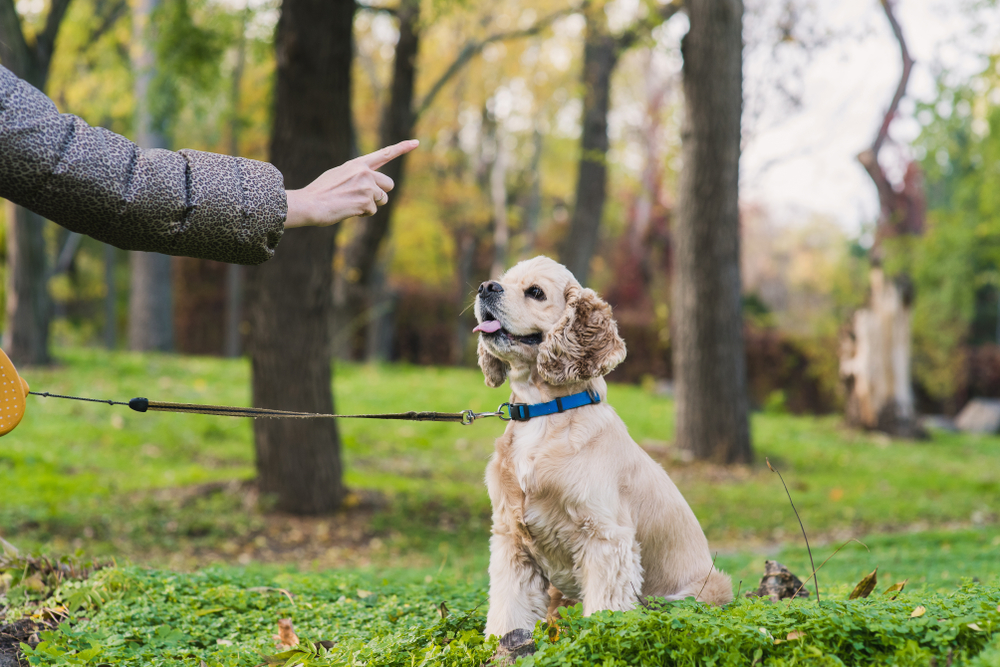Simple Dog Training Techniques for a Well-Behaved Pet
Simple Dog Training Techniques for a Well-Behaved Pet
Blog Article
The Ultimate Overview to Pet Dog Training: Transform Your Pet's Actions
Effective canine training is essential for cultivating a harmonious connection in between animals and their proprietors. This guide not only intends to equip you with the needed devices to transform your pet dog's behavior however additionally invites you to check out just how these fundamental concepts can lead to a much deeper link with your pet.
Comprehending Pet Behavior
Recognizing pet behavior is crucial for efficient training and an unified partnership in between dogs and their owners. A canine's behavior is influenced by a mix of genes, setting, and experiences. Dog training. Identifying these variables enables proprietors to tailor their training approaches to satisfy the private requirements of their family pets
Pet dogs interact mostly via body movement, articulations, and faces. A wagging tail can show exhilaration or joy, while a tucked tail may signal fear or entry. Observing these signs makes it possible for proprietors to respond appropriately, reinforcing favorable actions and resolving adverse ones successfully.
Additionally, recognizing the social structure of pets can offer understandings into their actions. Pet dogs are pack animals, and they grow in a structured setting. Establishing clear borders and constant regulations can protect against confusion and advertise a feeling of protection.
Additionally, recognizing the all-natural instincts of pet dogs, such as need to dig or go after, is important. These instincts can be redirected via appropriate outlets, such as play or workout. By comprehensively comprehending these behavior aspects, owners can promote a favorable training experience, ultimately resulting in a loyal and well-adjusted canine buddy.
Essential Training Strategies
Effective canine training relies upon a selection of important methods that can dramatically boost the learning process for both the pet dog and the proprietor. One fundamental technique is positive support, which includes gratifying preferable actions with deals with, appreciation, or play. This approach urges dogs to repeat the behaviors that lead to positive outcomes, fostering a trusting relationship between the pet and owner.
Another key technique is consistency in assumptions and commands. Making use of the very same spoken signs and hand signals assists the pet dog comprehend what is needed, decreasing confusion and promoting quicker learning. Additionally, developing clear borders and policies is vital for efficient communication.
Socialization is additionally an essential part of training. Revealing pet dogs to different environments, individuals, and various other animals helps them create proper social skills and reduces anxiousness in unknown circumstances.
Lastly, perseverance and timing are crucial. Training sessions need to be short but constant, guaranteeing that the dog continues to be engaged and responsive. By utilizing these important strategies, owners can develop a favorable and structured training experience that advertises great behavior and reinforces the bond with their canine companions.
Developing a Training Set Up
Exactly how can a well-structured training timetable improve a pet's discovering experience? A training schedule supplies uniformity, guaranteeing that pet dogs receive routine, concentrated instruction. This predictability aids dogs comprehend what is anticipated of them, strengthening their understanding and enabling far better retention of habits and commands.
When developing a training schedule, it is important to consider the pet dog's age, type, and individual character. Youthful pups may take advantage of shorter, extra frequent sessions, while adult pet dogs might thrive with check this longer, less regular training durations. Including a variety of activities can likewise maintain the sessions involving, preventing boredom and promoting interest for understanding.
In addition, scheduling training sessions at particular times of the day can assist strengthen a regimen. For example, coupling training with day-to-day strolls or playtime can create a positive association with learning. It is likewise vital to consist of time for support, such as deals with or praise, to award preferred habits quickly.
Finally, versatility is essential. While consistency is vital, being adaptable to the pet's mood or power level can boost their learning experience. A well-crafted training timetable inevitably lays the structure for effective interaction and a more powerful bond in between the canine and owner.
Common Educating Obstacles
In spite of having a well-structured training routine, dog owners usually encounter numerous obstacles during the training procedure. One usual problem is disparity in commands and cues. When multiple household participants use various terms or tones, a pet may become overwhelmed, impeding its ability to find out successfully.
Another constant difficulty is interruption. Dog training. Pets are normally curious animals, and external stimulations such as other pets, noises, or individuals can divert their interest throughout training sessions. This needs owners to produce a controlled atmosphere or gradually present distractions to enhance focus
Furthermore, varying power degrees can affect training end results. High-energy pet dogs may have a hard time to settle down and focus, while more easygoing types may require additional inspiration to involve. Tailoring the training technique to fit the individual pet dog's personality is vital for success.

Building a Strong Bond
A strong bond between a pet dog and its proprietor is crucial for successful training and overall wellness. Dog training. This connection promotes trust fund, which is crucial for effective communication during the training process. When a dog feels connected and protected to its owner, it is most likely to respond positively to commands and hints
To build this bond, consistency is essential. Establishing a routine that consists of normal feeding, workout, and training sessions assists produce a sense of stability. Additionally, positive support strategies, such as deals with, praise, and play, reinforce desired behaviors while reinforcing the psychological link.
Socialization is another vital facet of bond-building. Revealing your pet dog to different environments, individuals, and various other animals helps them really feel extra confident and comfy, improving the bond with their owner. Participating in tasks together, such as walking, playing bring, or taking part in obedience training, promotes synergy and shared enjoyment.
Verdict

Recognizing dog habits is essential for efficient training and an unified relationship between pets and their owners.Efficient pet dog training counts on a variety of necessary techniques that can considerably boost the learning process for both the pet dog and the proprietor.In spite of having a well-structured training routine, pet owners typically run into various challenges during the training procedure.In verdict, reliable pet training relies on an extensive understanding of canine habits, the application of necessary strategies, and the facility of an organized training schedule. By emphasizing positive reinforcement and consistency, dog owners can considerably enhance their animals' habits, eventually making sure an unified connection and promoting the wellness of both the canine and its atmosphere.
Report this page